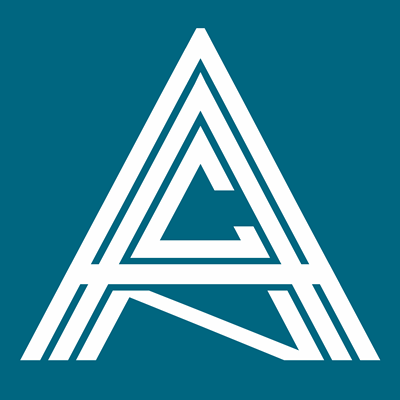
Reflecting on the last eighteen years of my life, I go back to the beginning of my journey. In 1999, I was studying ASL, American Sign Language, and Deaf Culture at college. It was a lifelong dream to be able to converse fluently with the deaf. I had grown up with a deaf brother and we had only communicated using drawings for fifty-five years.
Nearing the end of the spring term, I experienced balance issues, fatigue, nausea, dizziness, ear ringing, diminished hearing and a feeling of fullness in my left ear, room spinning and trouble walking without support. I wrestled with questions and especially “FEAR”- fear of the unknown. I needed answers!
I was diagnosed with benign positional vertigo (BPV) because of acute labyrinthitis by Dr Michael Smith, ENT in North Vancouver. I went to a Balance and Dizziness Disorder (BADD) meeting to learn coping skills. I was still dizzy. Back to Dr Smith. He arranged a Cat Scan immediately and found my little friend – a 1.5cm diameter mass in the left cerebellopontine angle, that contains cerebrospinal fluid, arachnoid tissue, cranial nerves, and associated vessels, which is consistent with an acoustic neuroma. Now I could plan!!
I met with Dr Michael Boyd who outlined three options considering my symptoms:
1. Wait and Scan
As my tumour was small, a follow-up MRI would be done one year later.
2. Surgery
I still had functional hearing in my left ear. Prior to surgery, I would need a full examination of the brain stem evoked potentials and full audiogram assessment including speech discrimination to give a better estimation of possible hearing salvage. Dr Boyd quoted me a 50-50 chance with the posterior fossa approach. He felt the tumor was not ideal for a middle fossa approach as my tumor went to the apex of the canal. In such circumstances, hearing is a bit more difficult to preserve. Nevertheless, he thought removing the tumor was a viable option.
3. Stereotactic radiation
This option offered an advantage of a decreased risk of hearing loss and facial nerve injury, However, not zero. He felt because of my age the potential for delayed effects from stereotactic radiation was less of an issue. He felt this was a reasonable alternative.
None of these alternatives would alter my balance. In fact, surgical intervention would likely make it transiently worse because of the loss of any residual vestibular nerve function.
However, Dr Boyd felt I would gradually compensate and my dizziness and balance would improve with time with any of the treatment options.
Dr Boyd handed me an ANAC pamphlet and sent us on our way. I needed to reach out to Evalyn Hrybko, ANAC Chapter Leader who kindly identified others to connect with. Everyone had a story and filled me with valuable information. My husband and I attended meetings and met wonderful caring and concerned people. I was no longer alone.
Because my husband is a journalist, we commenced research at the kitchen table. We poured through material on stereotactic radiation, fractionated versus one shot. We read everything about machines, LINAC, Gamma Knife, Cyber Knife, and the Lars Leksell frame. We became more and more confused. We called hospitals all over America. Our scribbler was filled with names and places (Toronto, Pennsylvania, Alabama, Cleveland, Rhode Island, California, and Washington). Could we afford to go to the States for treatment? Was the Gamma Knife indeed better? So many questions.
We were relentless in our search to do the right thing. We contacted a neighbour who studied at Stanford and was a Director of Engineering Physics, Associate Professor and Biophysics Associate at UBC and Director of the Michael Smith Lab Platform and Genome BC Technology Development Platform. Dr Marziali came right to our kitchen table. He reviewed all our research and simply said that the LINAC was a good machine. He had worked with it and assured us that the LINAC pinpointed with the same accuracy as the Gamma Knife. He also felt the fractionated approach with the LINAC gave the healthy tissue more chance of recovery between treatments.
I was on my way.... I met with Dr Michael McKenzie, radiation oncologist, at Vancouver Cancer Clinic who advised me that I was a candidate for stereotactic fractionated treatment on the LINAC 2 machine. We accepted the rationale that this treatment would result in the highest killing of tumor cells with the lowest effect on normal brain cells. There also would be less risk to the facial nerve, and importantly, a high probability of preservation of my hearing. The treatment itself would involve twenty-five visits over six to seven weeks.
A subsequent MRI indicated my tumour measured 1.7 cm. which included the tail. As my appointment did not come up for eight months, I busied myself with a night school course in Advanced ASL. I walked every day, had massages, avoided salt and never looked up. We attended ANAC chapter meetings. By mid-May, the dizziness was back with a vengeance.
July 2000 found me in the “Mould Room” for the 45-minute mask construction. The technicians built a mouth prosthesis to hold my external mask firmly in place during my treatments. The mask itself consists of a Delrin kind of meshed plastic. A rectangular piece was heated and then quickly molded to the back of my head. Similarly, another piece was heated and molded to the front of my face. It felt extremely warm, but it did not burn. The back and the front pieces clipped together at two points on each side of my head. Breathing through the mask was not a problem. The final step was to add more cement to attach the prosthesis to the bottom of the face mask. Once this dried, the sides of the mask were unsnapped. The technicians worked quickly and were very reassuring throughout the entire process.
I went for a CAT Scan wearing my newly constructed mask. A box was placed over my entirely masked head that would be marked precisely with sight markings on my tumour. It felt dark and awkward, but the staff worked quickly to slide me and all the apparatus into the CT machine. The task was completed in 20 minutes. The image files were on their way for radiotherapy treatment planning. Later that same day I had another MRI without my mask. I do recommend that one keep eyes closed during an MRI. I've had over 10!

Two weeks later, my LINAC treatments began. I was ushered into the radiation room. Lying on my back, I positioned myself on to the back half of my mask that was cradled between my upright arms. I was then handed the front half to put on by first placing the prosthesis in my mouth. When the buckle points were aligned, the technicians snapped the two halves together. This required super human finger strength due to the snug fit. Next, they put the sight marking box over my head and fastened it to the metal frame holding the mask. The ultraviolet lights were dimmed so that the technicians could see the projected red sight lines lined up accurately to the LINAC.
The box was removed, and the room lights turned up. The machine, the cot and I were in position for the first beam. Everyone left the room and the heavy door was closed. Outside, the technicians had a control panel and screens to view my image. Beams of radiation were shot. The beam makes a loud, droning noise, each lasting about twelve seconds. I felt nothing as the tumour was being treated. There is a flag available to hold in case of trouble. After five sequences, they returned to unsnap my mask. My bed was lowered, and I abandoned “ship”. Set up times varied from fifteen to forty minutes to ensure the accuracy of the beams. I sometimes counted to help me overcome claustrophobia. It was critical to remain still.
I met with my radiation physician once a week at the clinic. At my final visit, he advised that the effects of the radiation would peak over the following two weeks. My impression is that I suffered few side effects from the LINAC treatment.
The first weekend I recall some nausea but did not warrant medication. I found eating soon after each treatment kept my tummy comfortable. After session #18, patches of hair, the size of a loonie fell out in the shower. However, my hair regrew back within 5 weeks. I began to feel tired by the end of the series of treatments. Early in the sessions, I thought my hearing cleared but the old plugged feeling returned. I continued to feel some dizziness in bed at night. My follow-up audiograms and MRI's continued every six months for two years.
My hearing remained unchanged. The hearing in my left ear was diminished as it was prior to treatment. Also, there was no change in the tumour. However, the next MRI indicated the tumour shrank from 1.7 cm. to 1.5 cm. Shrinkage occurred on all sides. Follow-up appointments changed to yearly. On another positive note, I felt more energetic and my balance problems had lessened. At my annual appointment in 2004, Dr McKenzie shared positive reports about both hearing assessments and tumour appearance. I had no dizziness, loss of balance or untoward symptoms. My appointments were shifted to two-year intervals.
By 2010, Dr McKenzie rewarded me with the report “no new growth” and signs of tumor shrinkage. He said he never wanted me to come back.
That, my friends, is my story. As I reviewed the data, I was reminded how fortunate I am. How blessed to have help along the journey. These tumours take away your hearing, in exchange for tinnitus, imbalance, confusion, fatigue, pain, and dizziness. However, as human beings, we can be resilient, we can adapt, we can learn new ways of coping, and we can offer support to each other.
I now volunteer as intervenor with a deaf, blind lady using my ASL. She teaches me hard lessons about patience but gives me so much joy in living. I love my three beautiful daughters and my son who hangs my mask in his Band Room in Victoria. And my nine grandchildren and two great-grandchildren. Two years ago, I was fitted with red hearing aids in both ears. I guess it was time...even though I have no tumor in my right ear!
Addendum
The Vancouver Cancer Clinic LINAC machine was adapted for brain tumors in 1997. The LINAC 2 machine has since been replaced twice as it has a 10-year lifespan. It is now called the TRUE BEAM S10X. (x-ray)

